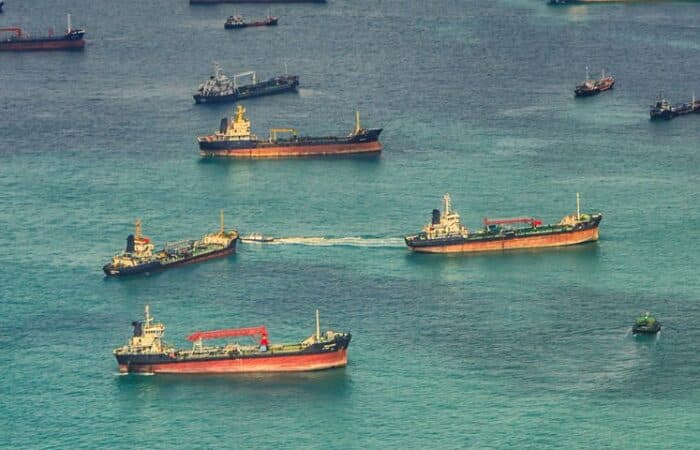AIS Spoofing
What is AIS Spoofing?
AIS spoofing involves the deliberate manipulation of automatic identification system (AIS) data to deceive maritime vessels, or monitoring systems. Spoofers can create misleading or dangerous situations by broadcasting false information, such as altering a vessel’s identity, position, or speed.
Bad actors have become more sophisticated in recent years and have developed new ways to conceal their illegal operations. AIS spoofing has also become an umbrella term for three main deceptive shipping practices.
- AIS handshake – the use of a decoy vessel as a disguise. The “dirty” vessel will assume the “clean” vessel’s identity as they are sailing at close proximity, while the clean vessel makes its way to its destination while dark. Upon returning, the vessels will recreate the switch, leaving the clean vessel unscathed
- Zombie vessel – the use of a scrapped vessel’s identity to perform illicit operations without legal repercussions
- Location (GNSS) manipulation – the use of a machine-generated location/path to disguise the true location of the vessel. Multiple methods have been identified to carry out this deception, including false transmission onboard the vessel and third-party onshore accomplices

AIS: From Friend to Foe
AIS technology was used as a safety precaution to avoid collisions when originally developed. AIS use has evolved with time and vessels’ AIS reliance has increased. AIS was not originally designed as a tracking tool, nor was it created as a security or risk solution. It was originally designed to ensure safe outcomes for crews and vessels. Safety of Life at Seas (SOLAS) sought to instill AIS transmissions as a primary safety tool for all vessels. AIS is now used for tracking dark activity, as disabling the AIS has become part of popular and evolvideceptive shipping practices, turning a tool that was meant to help authorities and crew members into a challenge.
What are Some Key Terms Related to AIS Spoofing?
| Term | Definition |
| AIS | AIS transponders transmit a ship’s position, identification number, and accompanying details about the ship. AIS maritime transponders broadcast static, dynamic, and voyage information. |
| Spoofing | The act of falsifying data or information to deceive systems or users. |
| AIS data | Information transmitted by AIS transponders, including vessel identification (MMSI), position (latitude and longitude), speed over ground (SOG), and course over ground (COG). |
| Global Navigation Satellite System (GNSS) | GNSS is a network of satellites that broadcasts timing and orbital information. It is used for navigation and measuring an item’s position. GNSS quantifies an item’s location, speed, and timing. In Windward’s context, it is used to determine the location of a vessel. |
The AIS Spoofing Case that Changed the Industry
The Yuk Tung vessel spoofed its AIS when it transmitted under a Panamanian flag, using the vessel name Maika, and altered its course and destination. This occurred on November 11, 2018, after a suspicious ship-to-ship transfer between the Yuk Tung and the Ocean Explorer in October 2018.
The Hika, Comoros-flagged vessel, had the same IMO as the Maika. The two vessels were sister ships, built in the same year, by the same manufacturer, with the same specifications and profile. However, during this time, the Hika was actually over 7,000 miles away. Meanwhile, the Maika (aka Yuk Tung) was deceiving authorities under the Hika’s name. This AIS spoofing case made it clear that bad actors had raised the bar.
AIS spoofing progressed as Iranian and North Korean vessels continued exploiting AIS vulnerabilities, taking their methods to new levels and showcasing the sophisticated capabilities of criminals and sanction evaders. More recently, the Russia-Ukraine war has caused bad actors to utilize AIS spoofing to get around regulations and sanctions on Russian oil, etc.
How to Combat AIS Spoofing?
To find and expose these bad actors and mitigate the damage they can cause, government agencies, traders, shipowners, and coast guards will need to understand circumstances and contexts quickly. A combination of maritime expertise and innovative AI technology can help. Windward’s Maritime AI™ platform can assist in various ways:
- Full sanctions compliance evaluation – sanctions screening and trade compliance for wet/dry bulk and containers
- Risk exposure for all entities – complete due diligence for every maritime and non-maritime entity across the entire supply chain/logistics sphere
- Illicit activity detection – patent-pending deceptive shipping practices models for dark activities, location (GNSS) manipulation, and ship-to-ship operations
- Customized insights – fully scalable and configurable risk indicators for every risk profile






